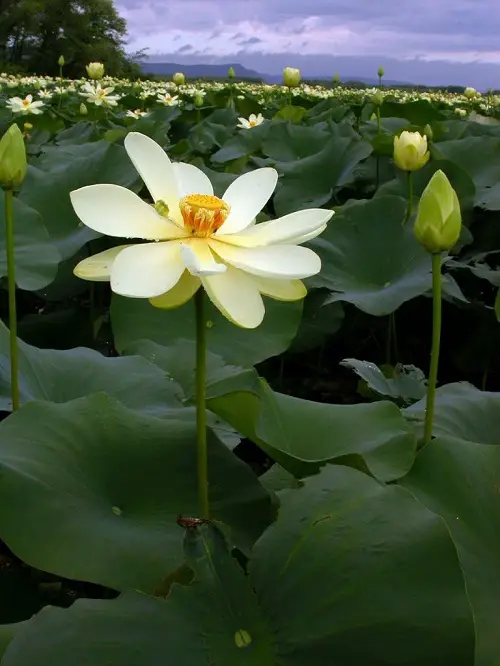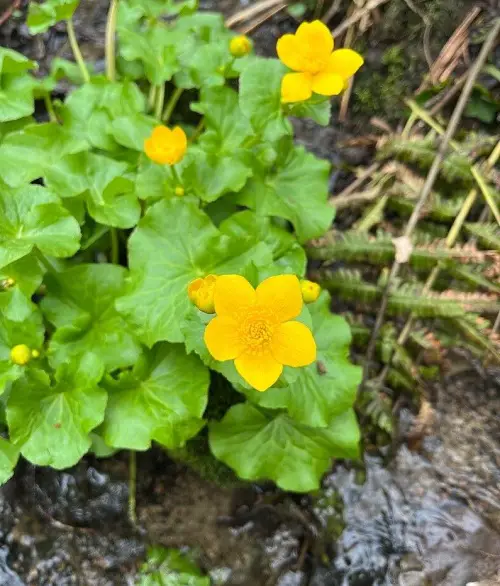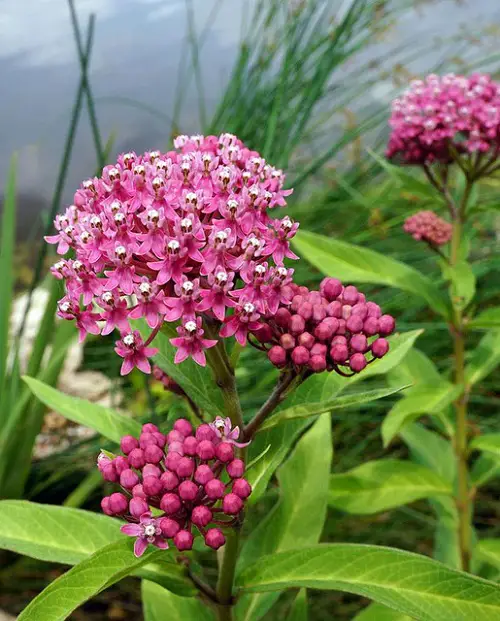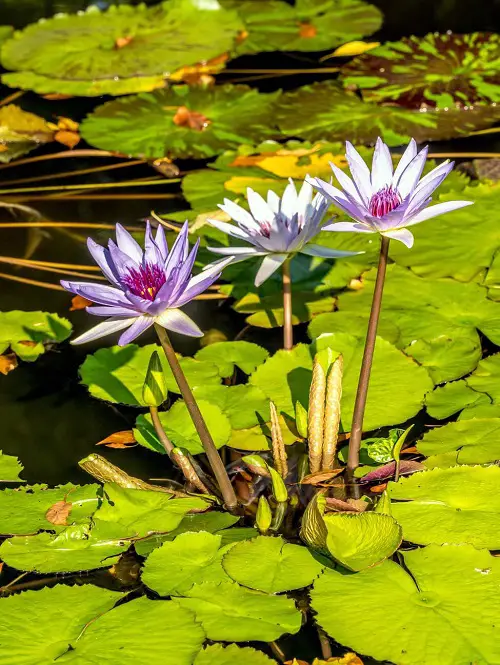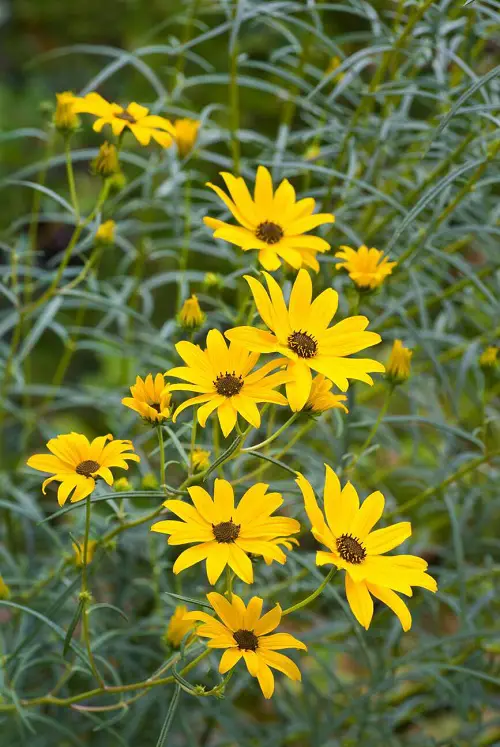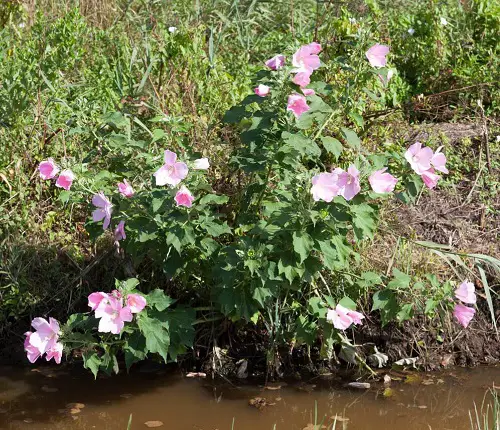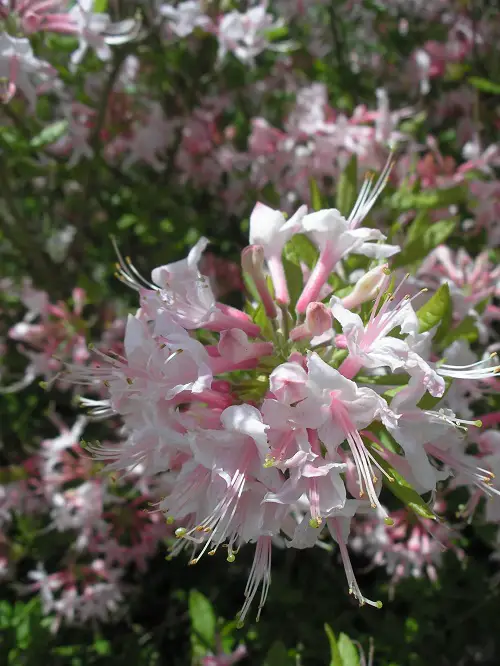Swamp flowers are quite a common sight along bogs and marches, thriving in any condition that offers them a wet environment.
Swamp flowers are a remarkable group of plants specially adapted to thrive in moist environments where other specimens fail to grow.
Swamp Flowers that Grow in Bogs and Marshes
1. American Lotus
Botanical Name: Nelumbo lutea
This one dominates the list of swamp flowers with its large, light yellow blossoms and distinctive seed heads. Blooming from June to September, it creates a dramatic visual with its circular, blue-green leaves rising above the water.
2. Bog Bean

Botanical Name: Menyanthes trifoliata
The Bog Bean grows beautiful flower stalks that float gracefully outside the water. Pick any wet area, and you might find this plant thriving on the border of the water body, showcasing its white flowers.
3. Blue Flag Iris
Botanical Name: Iris versicolor
Blue Flag Iris grows well on the marshes, meadows, or streambanks of Florida with its bright flowers and light-green foliage. Do note that its rhizomes contain iridin, which is toxic to both humans and animals.
4. Bog Rosemary
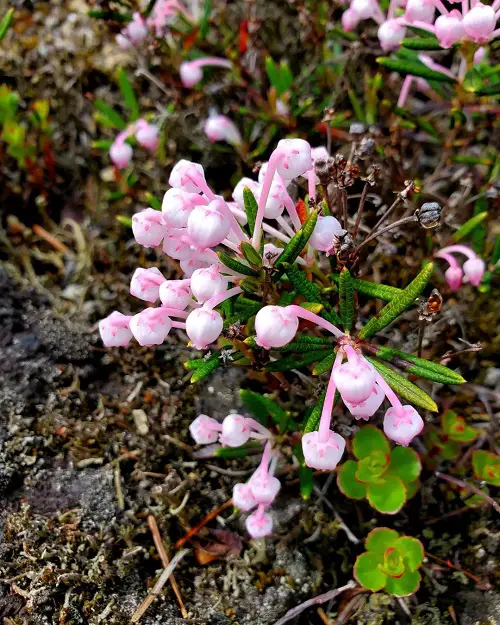
Botanical Name: Andromeda polifolia
Bog Rosemary is a small shrub with bell-like flowers that change colors from white to pink. Its leaves are dark green with a distinctive white underside and curl at the edges. It is a common sight in the cold, peat-rich bogs of the Northern Hemisphere.
5. Common Cattail
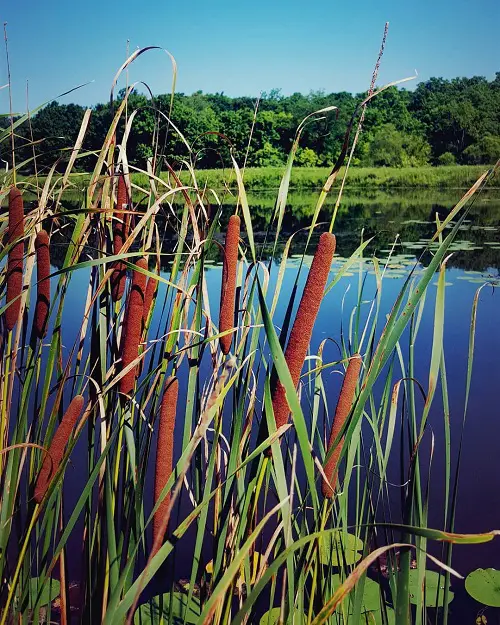
Botanical Name: Typha latifolia
The common cattail thrives in fresh and slightly brackish waters, which is common in the wetlands of North Carolina. It grows a combination of male and female fluffy flowers with a signature, brown cigar-like spike.
6. Marsh Marigold
Botanical Name: Caltha palustris
Marsh Marigolds are perennials in the buttercup family, with kidney-like leaves and yellow blooms emerging as one of the first signs of spring in temperate regions. They bloom from April to August and brighten up marshes, fens, or wet woodlands.
7. Pickerel Weed
Botanical Name: Pontederia cordata
Pickerel Weed can grow up to 4 feet tall and withstand occasional flooding. Its lavender-blue flowers bloom from summer through fall. These swamp flowers are best for the edges of ponds, streams, or water gardens, if you plan to grow one!
8. Swamp Milkweed
Botanical Name: Asclepias incarnata
Swamp Milkweed grows delicate clusters of light pink to purple flowers. These blooms are noted for attracting wildlife, especially butterflies and hummingbirds. The plant thrives in rich, muddy bogs.
9. Water Lily
Botanical Name: Nymphaeaceae
Water lily produces fragrant flowers and grows in muddy bottom of lakes, ponds, or marshes. You might spot it growing in the marshes and you can also grow miniature water lilies in the containers, too.
10. Water Hyacinth
Botanical Name: Eichhornia crassipes
Water hyacinth grows in freshwater with its lavender-blue flowers, creating an eye-catching display above its rosette base. It is common in the U.S., including Florida, California, and Washington State.
11. False Goat’s Beard
Botanical Name: Astilbe
False Goat’s Beard is a perennial plant with feathery plumes of flowers rising above its fern-like foliage. It is resilient and thrives best in moist conditions, making it ideal for swamp gardens.
12. Swamp Sunflower
Botanical Name: Helianthus angustifolius
Native to the USA, this striking flower thrives best in wet locations, especially in boggy areas. Its blooms are bright yellow and grow in late summer and fall.
13. Swamp Hibiscus
Botanical Name: Hibiscus moscheutos
The plant is also popularly known as rose mallow, and you can easily spot one along the marshes and swamps by its large, showy flowers in shades of white, pink, or red.
14. Buttonbush

Botanical Name: Cephalanthus occidentalis
The plant stands out with its spherical white flowers and thrives anywhere that is sunny and wet. It is a must-have if you want to attract wildlife to your garden!
15. Swamp Azalea
Botanical Name: Rhododendron viscosum
Don’t confuse it with the regular azaleas that we are all so familiar with! This one thrives in wet soils that are common in swampy, boggy areas. Come spring and the plant grows pale pink to white flowers, too!
16. Swamp Dogwood
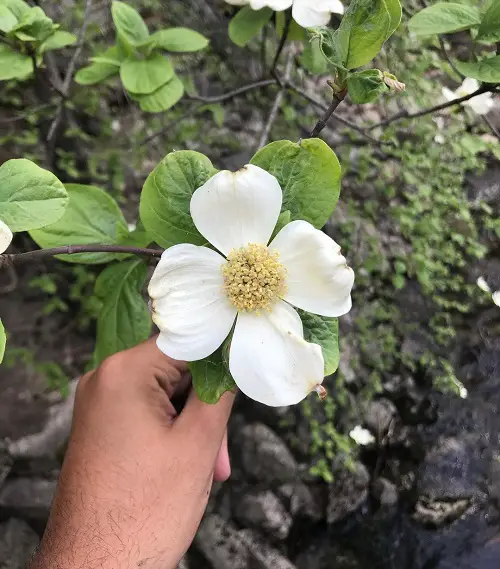
Botanical Name: Cornus amomum
These swamp flowers grow blue or white fruits, that match really well with its fall foliage that takes a deep maroon-copper hue. It grows best in moist and acidic soil, and you can spot one near stream banks.


